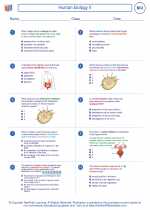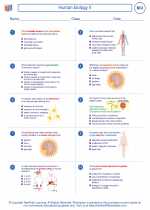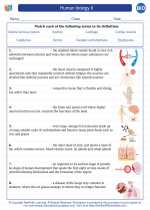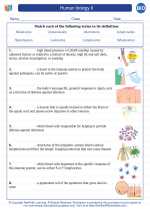Heredity
Heredity is the passing on of traits from parents to their offspring. These traits can be physical, such as hair color or eye color, or related to specific genetic conditions.
Mendelian Genetics
Gregor Mendel, a 19th-century scientist, is often referred to as the father of modern genetics. He conducted experiments on pea plants and established the basic principles of heredity, known as Mendelian genetics.
Key Concepts in Mendelian Genetics
- Genes: Units of heredity that are passed from parents to offspring. They code for specific traits.
- Alleles: Different forms of a gene. For example, the gene for eye color may have alleles for blue, brown, or green eyes.
- Dominant and Recessive Traits: Some alleles are dominant and mask the expression of recessive alleles. This is known as the principle of dominance.
- Punnett Squares: A tool used to predict the possible genetic outcomes of a cross between two individuals.
Chromosomal Theory of Inheritance
The chromosomal theory of inheritance states that genes are located on chromosomes and that the behavior of chromosomes during meiosis can account for Mendel's laws of heredity.
Sex-linked Inheritance
Some traits are determined by genes located on the sex chromosomes (X and Y). This leads to different patterns of inheritance for these traits.
Non-Mendelian Inheritance
While Mendelian genetics explains many patterns of inheritance, there are exceptions that do not follow these principles. Examples include incomplete dominance, codominance, multiple alleles, and polygenic traits.
Study Guide
- Define heredity and explain its significance in biology.
- Describe Gregor Mendel's contributions to the field of genetics.
- Explain the concepts of genes, alleles, dominant and recessive traits, and Punnett squares.
- Discuss the chromosomal theory of inheritance and its implications for heredity.
- Provide examples of sex-linked inheritance and explain the differences in inheritance patterns for traits located on sex chromosomes.
- Compare and contrast Mendelian and non-Mendelian patterns of inheritance, giving examples of each.
[Heredity] Related Worksheets and Study Guides:
.◂Biology Worksheets and Study Guides High School. Human biology II

 Worksheet/Answer key
Worksheet/Answer key
 Worksheet/Answer key
Worksheet/Answer key
 Vocabulary/Answer key
Vocabulary/Answer key
 Vocabulary/Answer key
Vocabulary/Answer key
 Vocabulary/Answer key
Vocabulary/Answer key
 Vocabulary/Answer key
Vocabulary/Answer key
 Vocabulary/Answer key
Vocabulary/Answer key
 Vocabulary/Answer key
Vocabulary/Answer key
 Vocabulary/Answer key
Vocabulary/Answer key
